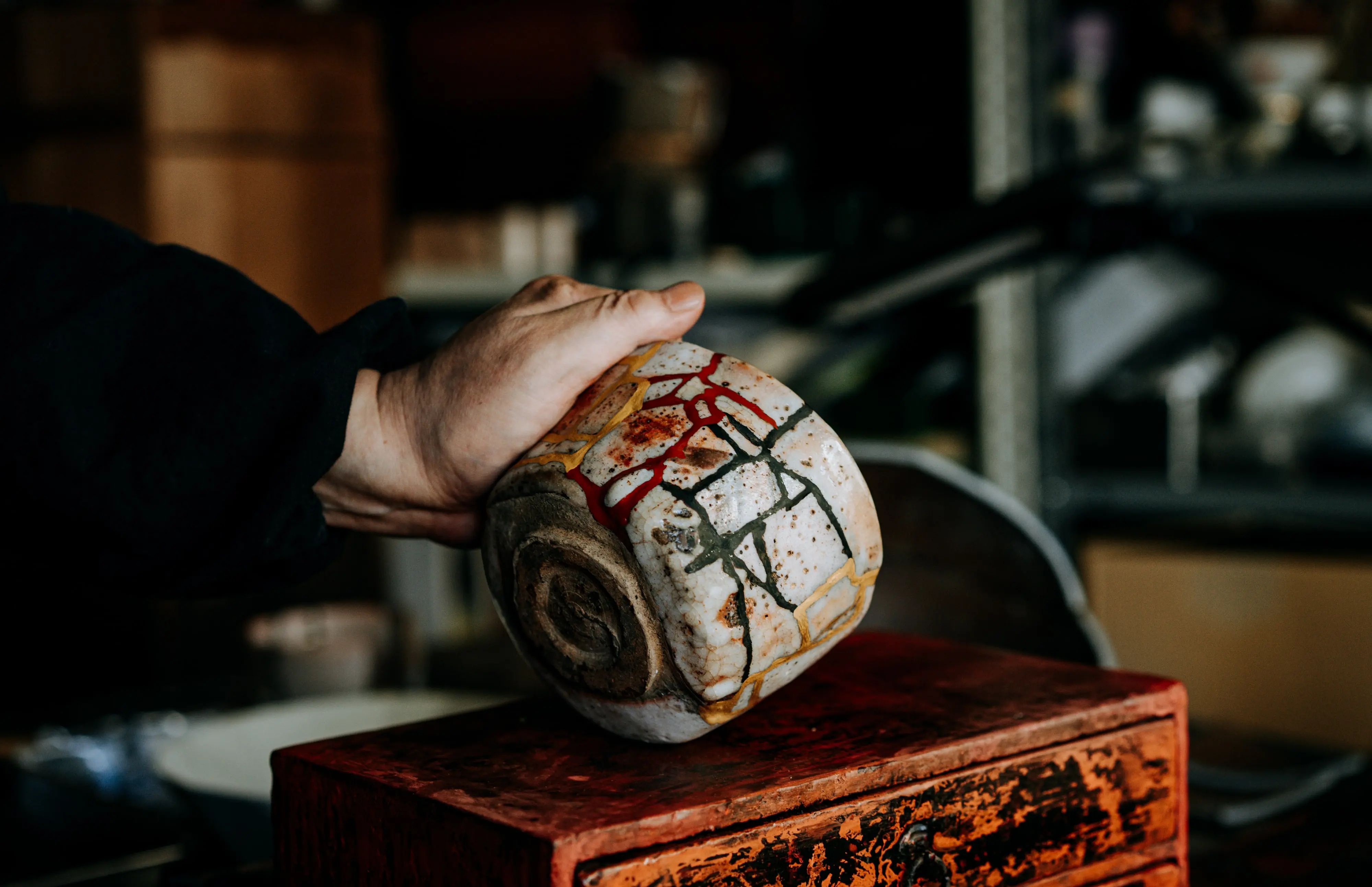 Please portrait the browser
Please portrait the browserFor the best user experience

 Please portrait the browser
Please portrait the browser
Discover about Kintsugi: The Art of Broken Ceramics.
Purchasing and collecting pottery or other glassware has its own set of delights. It would be a pity to lose out on the many patterns, themes, and gorgeous strokes.
Even said, it must be noted that purchasing glassware needs greater consideration. When it falls and breaks, it is generally thrown away right away since it can no longer be utilized or has no aesthetic value.

But did you know that damaged ceramics may still be aesthetically pleasing? Kintsugi is a type of ceramic art that emphasizes the beauty of an imperfection by assembling shattered ceramics into priceless works of art.
Kintsugi is derived from the terms 金 (kin) which means gold and ‘継ぎ (tsugi) which means repair, therefore when the two words are combined, it literally means gold repair. This piece was created in Sakura Country, Japan.
Kintsugi employed the process of gluing varnish and gold powder. As a result, the shattered ceramics are not covered up, but rather assembled and shown using a gold-colored substance.
Kintsugi is said to have existed for hundreds of years, or more precisely, during the Muromachi period in the 15th century. The plot begins with a Shogun (military official) called Ashikaga Yoshimasa breaking his prized cup by mistake. He then sent the cup to a Chinese artisan to be repaired. Unfortunately, the Shogun was still displeased and upset since the cups were just made of metal.
This inspired Japanese artisans to explore various techniques to restore damaged products while still making them seem attractive and agreeable to the eye. Finally, the Shogun discovered a clever and brilliant artisan by putting the cups together with glue or epoxy, as well as a combination of mica powder to mask the shards. Kintsugi was born as a result of this.
Kintsugi has three distinct techniques: the crack technique (ひび, hibi), the piece method (欠けの金継ぎ例, kake no kintsugi rei), and the joint-call (呼び継ぎ, yobitsugi). Sap is used in the crack method to connect and fill gaps in shattered components. Sap is used in the piece method approach to fill in missing bits or fragments. The joint-call technique, on the other hand, is a method of bringing together pieces from other items to replace missing sections of the goods being repaired.
The Kintsugi method is still in use today. It may be used to make accessories, furniture, and even fill holes in roadways, in addition to mending ceramics and pottery.
In addition to its aesthetic purpose, it also expresses philosophical principles in life. Kintsugi is part of the Zen Buddhist philosophy of 'Wabi Sabi,' which involves perceiving and praising the basic, ancient, and sometimes faulty. In Wabi Sabi, the principle of kintsugi teaches people to appreciate shattered objects. This is similar to when we attempt but fail; we should still appreciate the efforts made and learn to accept our flaws so that they might bring us to a much deeper feeling of calm.